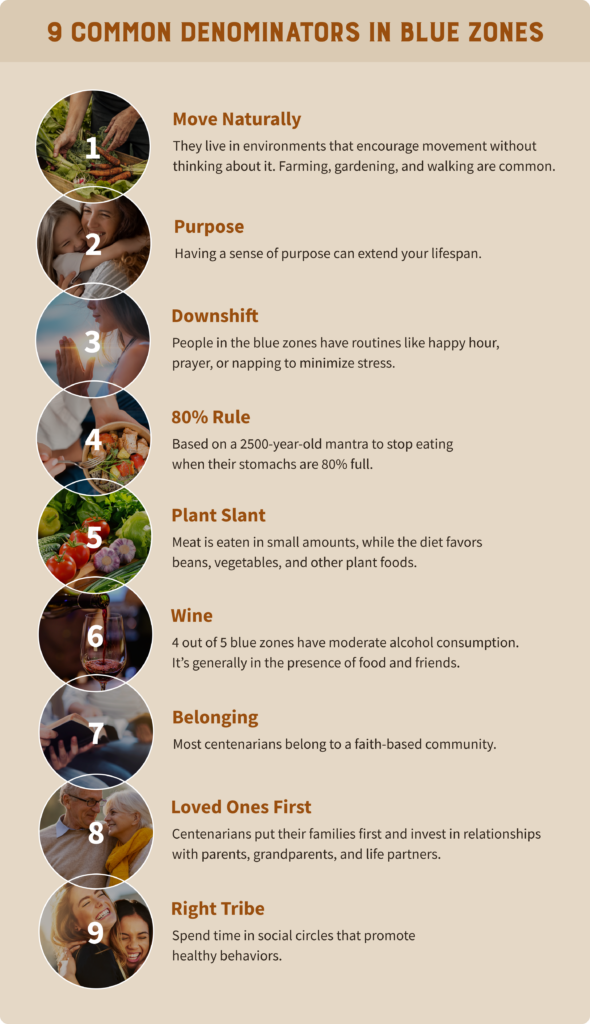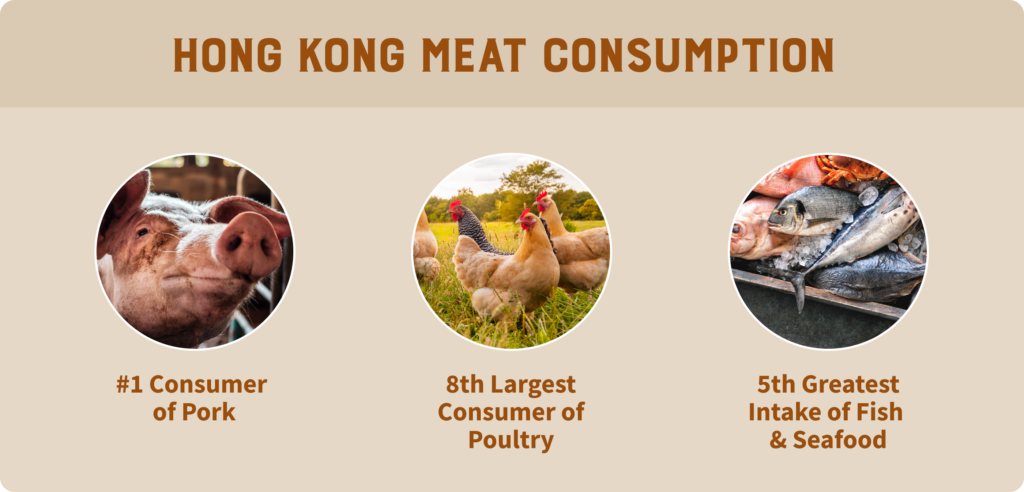PLEASE NOTE: The information in this blog is for educational purposes only. It is not a substitute for professional medical advice. Consult your healthcare provider if you’re seeking medical advice, diagnoses, or treatment.
With numerous books, videos, and even a popular Netflix series, few ideas in nutrition have captured hearts and minds like the Blue Zones.
The concept of the Blue Zones is that researchers identified 5 locations across the globe with high levels of centenarians (living to 100 and above) and sought to identify the reasons behind this exceptional longevity.

The documentary gives us a simple formula for improving longevity and living happy, healthy lives!
That formula goes something like this.
- Have a strong purpose and meaningful connections
- Stay active
- Manage stress
- Follow a primarily plant-based diet
But is eating a plant-based diet (thereby limiting animal foods) a surefire way to live to 100? Or is this yet another example of misleading information used to push a plant-based narrative?
Let’s take a look!
What Are the Blue Zones?
Dan Buettner, an explorer for National Geographic, and a team of demographers identified 5 locations with high levels of individuals living beyond 100 years old.
Now known as “The Blue Zones”, these areas include Loma Linda, California; Okinawa, Japan; Ikaria, Greece; Sardinia, Italy; and Nicoya, Costa Rica.

In Buettner’s 2010 book called The Blue Zones: Lessons for Living Longer From the People Who’ve Lived the Longest, he outlines 9 common denominators from the blue zone populations (1):

Sounds pretty good, right?
While most of the suggestions from this book are admirable, there are various issues with the Blue Zones data and the narrative surrounding it. One of the main misconceptions is that blue zone residents follow a plant-based diet.
Are the Blue Zones Actually Plant-Based?
One of the key dietary suggestions from Ban Buettner’s book is to limit meat and seafood intake. These suggestions include (2):
- 2 ounces of meat or less about 5 times per month
- Less than 3 ounces of fish, up to 3 times per week
- Include no more than 3 eggs per week
- Reduce dairy
So, 95-100% of the suggested diet comes from plant-based sources, while animal foods are best eliminated or minimized.

Do the residents of these blue zones actually follow these suggestions? Not exactly!
Loma Linda, California, home to many Seventh-day Adventists (who promote plant based diets), is the only blue zone that primarily excludes meat.
2003 data from one of the blue zones, Okinawa, showed that daily meat consumption was about 20% higher than the national average (3).
Moving on to Costa Rica, people in the Nicoya region were shown not to eat more salads, nuts, or olive oil, while they eat more fat and animal proteins like beef, chicken, and seafood (4).
Ikaria, Greece residents also dine on wild goats native to the region (5).
A study from 2022 even concluded that “The evidence currently available does not allow for recommending the adoption of a diet that might be considered as being ‘BZ specific’ outside the context in which it was born and evolved over time, least of all on the pretext of promoting longevity (6).”
Another study from 2013 in Asian countries found a significant inverse relationship between cardiovascular disease mortality for men and cancer mortality for women eating red meat (7).
So, only one blue zone follows a truly plant-based diet, while the others include various animal foods like dairy, beef, chicken, goats, or seafood.
Areas such as Hong Kong also throw a wrench into aspects of the Blue Zones narrative.
The Curious Case of Hong Kong

As of 2023, Hong Kong is estimated to have the second-highest life expectancy in the world at almost 86 years old (8).
Based on the Blue Zones’ conclusions, Hong Kong residents should be dropping like flies because people in this region love their meat (9)!

Residents consume over 445 pounds of meat per person yearly (well over a pound per day)!
Meat consumption is obviously just one factor to consider, but it shows that high meat consumption and longevity can go hand-in-hand and that there’s no one-size-fits-all formula to follow.
Did Fraud or Error Impact the Blue Zones Data?
Emerging data has shown that ‘superb age attainment’ can be predicted by indicators of fraud and error, such as lack of birth certificates, shorter average lifespans, and high levels of crime and poverty (10).
The same study found that supercentenarians in the United States are concentrated in areas with incomplete vital registries. In Italy, supercentenarians are in the most remote, poorest, and shortest-lived provinces.
Just as in Ikaria and Sardinia, Okinawa is a region with high crime and shorter life expectancies compared to the national average. However, the longevity of the Nicoya region of Costa Rica is listed as unlikely to result from exaggeration or error (11).
To add even more confusion, an analysis from 2010 found that 238,000 centenarians were dead or missing!
So, the data used to popularize the Blue Zones has raised numerous red flags.
Longevity is About More Than Just Your Diet…
Even though the Blue Zone’s story has several glaring flaws, it still offers valuable lessons like the importance of forging meaningful relationships, staying active, and eating a diet mainly of whole, unprocessed foods. These are all positive things.
At the end of the day, it’s not just about living a long life but living as many years as possible in strong health! Achieving this requires much more than a particular type of diet.
Diet is surely a critical component of living a long, healthy life, but the idea that you need to (limit or completely avoid) animal products does not stand up to the test of time.
If you’re confused about how to structure your diet, check out the ultimate guide to the animal-based diet for detailed suggestions!
Subscribe to future articles like this: